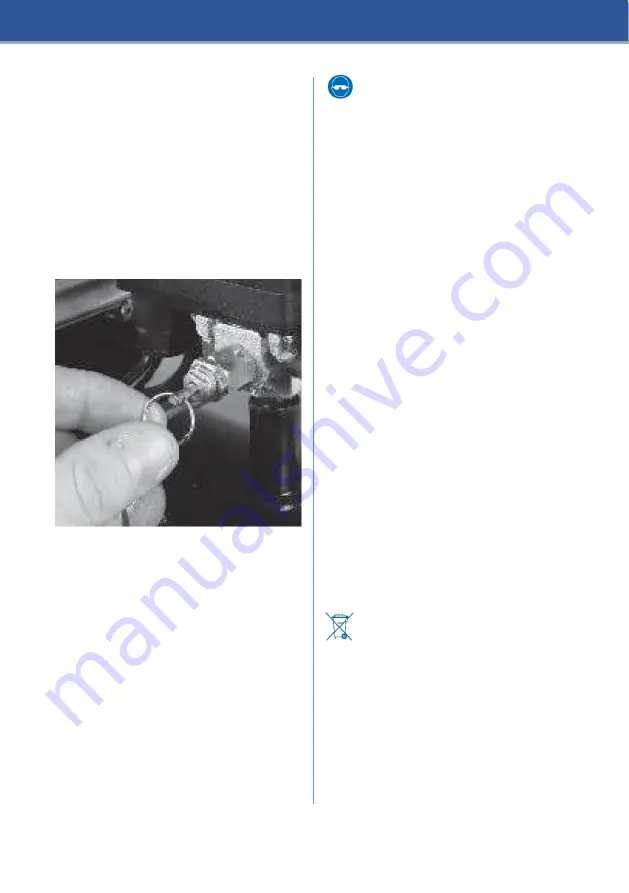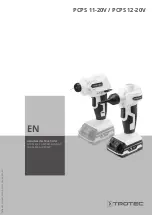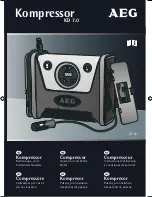
7
COMPRESSOR
valve to the right. To decrease the pressure, rotate
the valve to the left.
Whenever you finish work or leave the compressor
unattended:
- press the on / off button;
- wait for the compressed air to go out through the
exhaust valve under the pressure controller case
(you should hear a half a second, short air outlet);
- turn off the equipment and remove the plug from
the socket;
- pull the safety valve ring to ensure that the
compressed air exited the tank or unscrew the
exhaust cap of the tank to release pressure.
Cleaning and maintenance
After the first 10 hours of operation, drain the oil
from the crankcase and add clean oil. Once you do
this, oil shall be changed every 500 hours of
operation.
After each operation, unscrew the drain plug to
exhaust condensation from the tank. Check the
filtering element inside the air filter and replace it
whenever necessary.
Check the functionality of the safety valve on a
daily basis.
Bring the tank under pressure and pull the safety
valve ring outward.
There must be air coming out through the valve.
When you release the valve ring, the air flow must
stop.
Keep your face away from the safety valve
as the air is released with a very high
pressure. Wear goggles!
If the safety valve is not working properly, turn off
the compressor immediately and call our
authorized repair department to have it checked.
Check all fixing bolts and their tightness on a
regular basis.
Check the condition of the power supply cord on a
regular basis, at short time intervals.
To avoid any risks, damaged cables must be
immediately replaced by qualified personnel.
Keep the inlet and outlet air plugs clean and free.
Remove dust and dirt on a regular basis, using a
soft brush or a damp cloth.
Grease all mobile parts on a regular basis.
When cleaning the compressor, wipe it with a
damp, soft cloth.
Do not use alcohol, gasoline or other detergents.
Do not use caustic cleaners on plastic object.
Compressor must not come into contact with
water.
RECYCLING
Electrical and electronic equipment waste (WEEE)
might contain dangerous materials which can have
a negative impact on the environment and human
health if not collected separately.
This item is in conformity with the European
Directive EU WEEE (2012/19/EU) and is marked
with an electronic and electrical waste logo
graphically represented in the image below.
This icon shows that WEEE should not be
collected with household waste but
separately.
We recommend you to consider the following:
- Materials and components used when
manufacturing this item are high quality materials
which can be reused and recycled;
- Do not throw away the item with household
waste at the end of life;
- Take the item to a collecting point where it
will be collected for free;
Summary of Contents for VCMP002
Page 1: ......
Page 3: ......
Page 27: ...26 Heinner e...
Page 28: ...27 2 17...
Page 29: ...28 300 o...
Page 31: ...30 7 10...
Page 32: ...31 10 500 2012 19 RoHS RoHS 2011 65...
Page 33: ...Manufactured for Network One Distribution Marcel Iancu St no 3 5 Bucharest 020757 2016...









































